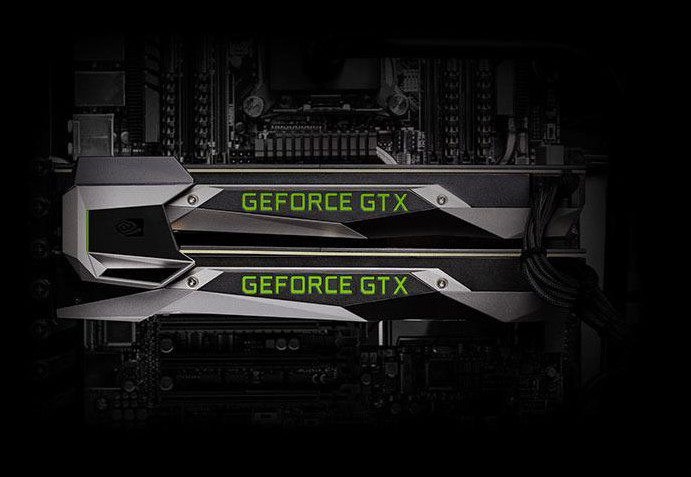We have chosen two gaming headsets, one from a well-known manufacturer and the other from a relatively new one. Both cost around 100 dollars.
Introduction
Finding the right headphones is always a difficult task because you have to consider many factors like, for example, what are you going to use them for, the design and of course, the price. We have chosen two expensive gaming headset to see for ourselves if gaming components are worth the price.
What a gaming headset must offer?
We all agree that one of the fundamental features is an adjustable directional microphone, since a gaming headset without microphone is useless. There are also some other important elements like a long, durable cable and a design that isolates us from outside noise but also allows us to communicate with our peers during LAN Parties. In our opinion, padded headsets are the best.
Gaming headsets should also offer the possibility to be used with our sound card, but they must also give the option of connecting them to out computer via USB to make everything faster.
The two models we tested today have these features, they even excel at some of them, so they’re both fine for now. Now it’s time to see how they behave in different ways and also know which the one for you is.
Music
These headphones are not precisely designed for listening to music, but it’s still good to see what they’re capable of in this regard. Here’s our personal experience with them.
Both headsets feature similar 50-mm triggers, which lead to great performance in regards to noise control and different frequencies. Still, we feel ASUS has made the better headset, thanks to its more vivid sound, nice bass and overall excellent sound quality. Low-frequency sounds are not the priority of gaming headsets, however.
In regards to music, The Tesoro Kuven headset performs poorly as they’re not designed for music, but rather tasks that require excellent bass. As you’ll see, this headset is fully oriented for gaming.
Movies
In regards to movies, both headsets behave much more elegant way. Thanks to their excellent bass, movies sound rich and powerful. Their positioning systems, when used via USB, can also magnify these sound effects and the results are often great.
Both headphones are bulky and designed for gamers. Here you can see the Tesoro Kuven Devil and the Orion by ASUS.
Both gaming headsets isolate the user from outside noise, during movies this translates into a great performance with the correct volume level (which has to be moderate, as it can be detrimental to your health).
The insulation system of both headphones, passive systems, there really are not too elaborate so if we use them as a way of isolating films enjoy our world better for us to use media volume levels (we use these headphones, like any other sparingly since your continued use mainly high volume levels can be really harmful to hearing) but controlled to have good insulation.
Both have microphones. The Tesoro headset features a flexible and adjustable microphone, while the ASUS one features a flexible and retractable one.
In this regard, the Tesoro Kuven headset doesn’t perform remarkably, but significantly improve if you use the DSP CMedia integrated with the USB controller. These headphones, therefore, are designed specifically to be used via USB. The Orion headset, meanwhile, performs well no matter how you use them, especially if you have a good sound card.
Here you can see the analog controller of ASUS’ Orion headset with volume control and an option to activate or deactivate the microphone. Next to it it’s the Treasury Kuven headset showing the same feature.
Games
This is undoubtedly the most important aspect about the performance of these devices, since this is what they’re designed for.
The Tesoro Kuven with its 7.1 virtual sound system offers some really good effects in games, like a positioning effect that intensifies low-frequency sounds thanks to its 7.1 Virtual technology that works when connected via USB. It’s not the first time we have test this technology and to me is a cheap and easy way to achieve great results for a relatively low price. You will require some specific drivers to take advantage of these effects and features, although you can also use them without installing anything. With this technology, this headset performs commendably. The microphone has an acceptable quality and its integrated technologies can get the most out of it. It also features voice effects, amplification, noise cancellation and more. Without a doubt, it’s a great headset.
USB consoles. These have more features with the Kuven headset, with a good DSP and generally more options that the ASUS one. The ASUS console includes a noise cancellation system for the mic.
The ASUS Orion is, in opinion, the one that sports the best design, but also the one that depends more on its software and drivers to offer good results. The noise control system this headset supposedly features doesn’t seem to work too well. The microphone features an electronic sound cancellation system but sadly it is not as efficient as we might hope. The noise cancellation system of the headphones is the same as in the Kuven headset, although its performance isn’t particularly better. As for sound quality, they do an excellent job in games as they make the sound effects fell powerful and vivid. You’ll have to turn the volume up a bit, though, as this headset tends to be on the quiet side. Generally, they offer a good performance and are definitely better than the Tesoro Kuven if you don’t connect them via USB.
The DSP CMedia controller is integrated in the USB controller integrated of the Tesoro headset. They include 7.1 virtual technology.
Ergonomics and design
Some details in the design might be the defining factor for some users. The Kuven have a more aggressive and striking design, but the manufacturing quality of the ASUS headset is definitely more sophisticated and offers a higher quality. Neither has excellent materials, they’re honestly pretty average, but the Orion offers better pressure on the head, they are lighter, and have a thicker shielded cable and other details such as the retractable microphone or a comfortable protective material, plus a rubber connector to keep the microphone connector protected, avoiding unwanted interference. This detail, in our opinion, is remarkable.
The details of the connector to keep the microphone in a rubber isolator is remarkable to me.
Neither are perfect because the connecting system of the Kuven makes it more convenient –the ASUS one has too many cables-, as well as being more flexible and easier to transport. The microphone is also stronger in Kuven as the design of the ASUS cable makes it less rigid and tends to be prone to small accidents.
Which design you prefer is obviously a matter of taste, but the ASUS is more serious-looking. Still, classic-looking designs like the ones Tesoro offers have made this relatively new company a bit famous.
Both are comfortable headphones but ASUS are lighter and more comfortable.
Analysis and Conclusion
These two handsets have similar prices and similar features, but I think ASUS offers a more complete and refined product thanks to their experience. It’s still far from being the best gaming headset on the market –the best ones are actually ASUS ones-, but it is still a solid device.
Its console also allows us to connect them to consoles like the Xbox 360 or PS3 –a feature we didn’t try, and we also didn’t test them with the newest consoles-. They may also make things more complicated, though, as you’ll have more cables to deal with. The Kuven headset has a modern and aggressive-looking that will certainly appeal to some users, and the USB drivers offer excellent results, but overall I think the Orion headset by ASUS is much better.





